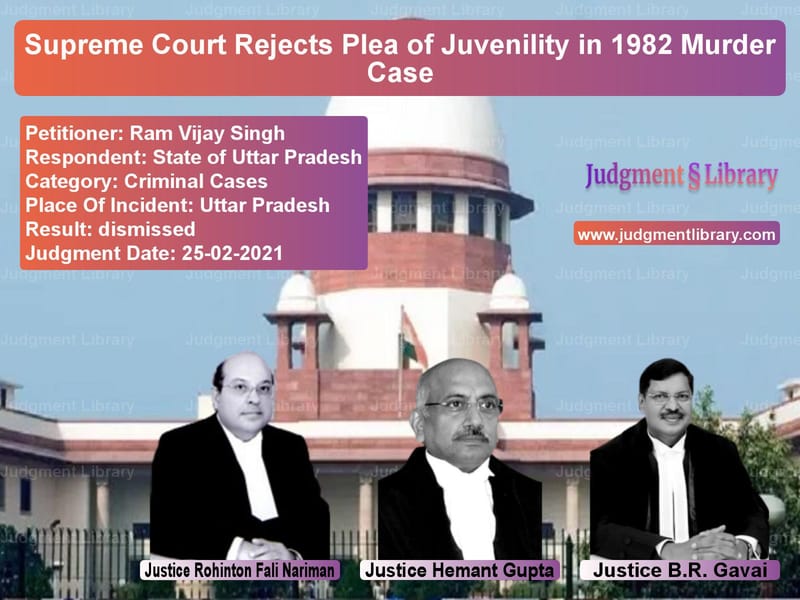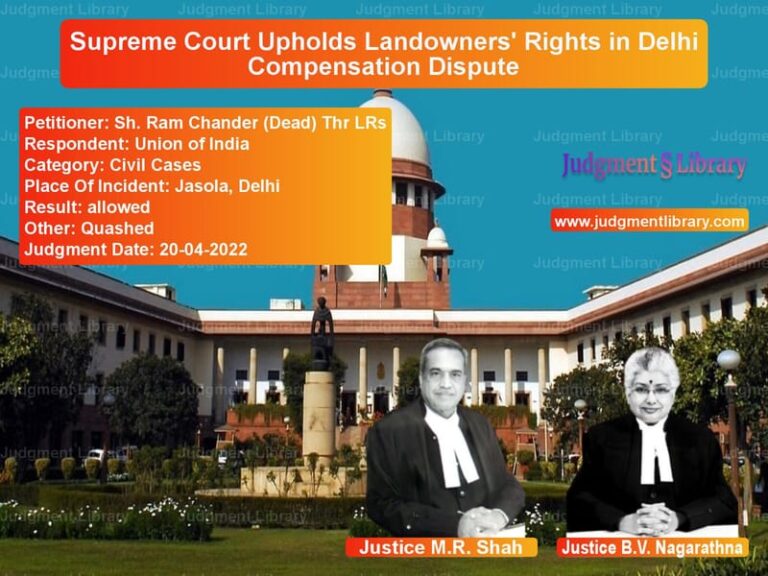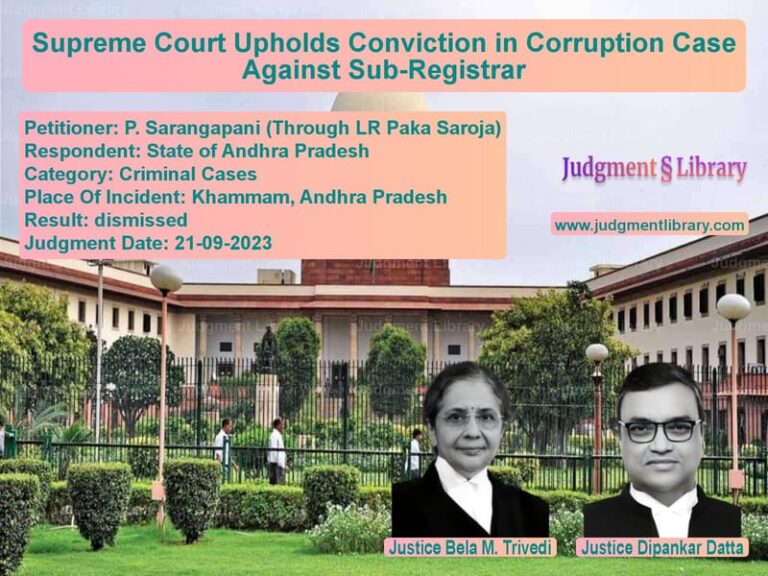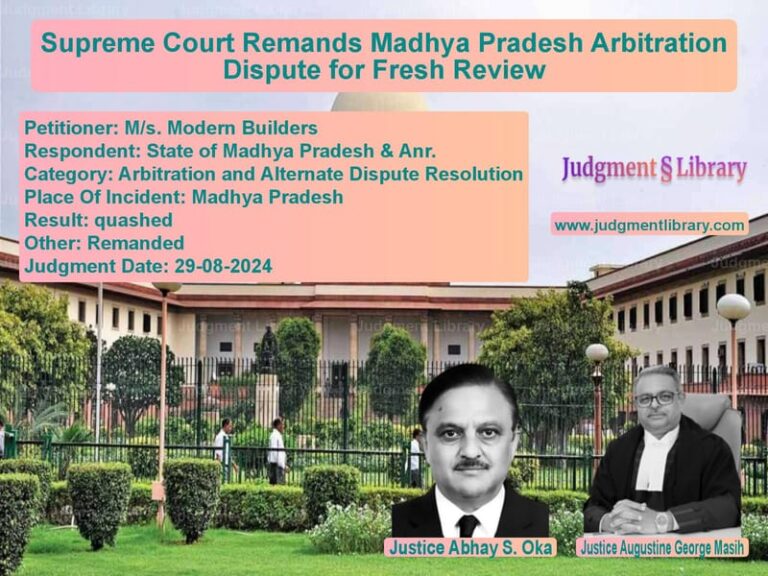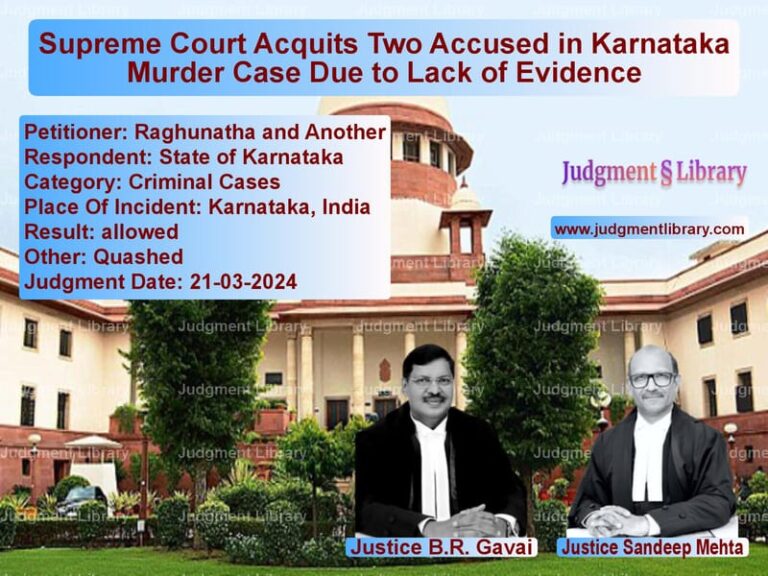Supreme Court Rejects Plea of Juvenility in 1982 Murder Case
The Supreme Court of India recently delivered a significant ruling in Ram Vijay Singh vs. State of Uttar Pradesh, a case concerning a murder conviction under Section 302 read with Section 34 of the Indian Penal Code (IPC). The appellant, convicted of murder in 1982, sought relief by raising the plea of juvenility, arguing that he was a minor at the time of the crime.
Background of the Case
The case dates back to July 20, 1982, when the appellant, Ram Vijay Singh, was convicted of murder. The Allahabad High Court dismissed his appeal against conviction in April 2020. Subsequently, the appellant moved the Supreme Court, raising a plea of juvenility based on documents such as a family register, Aadhaar card, and a previous bail order that relied on a radiologist’s report estimating his age between 15½ – 17½ years at the time of the crime.
Petitioner’s (Ram Vijay Singh) Arguments
The appellant, through his counsel, contended:
- That he was a juvenile on the date of the crime (July 20, 1982) and should be granted the benefit of the Juvenile Justice Act.
- That a previous bail order from 1982 had considered his age between 15½ – 17½ years, thereby supporting his juvenility claim.
- That the Supreme Court, in its July 2020 order, had directed the Allahabad High Court to determine his juvenility claim.
- That a medical board report dated September 8, 2020 estimated his current age between 40-55 years, supporting the argument that he was under 18 years at the time of the crime.
Respondent’s (State of Uttar Pradesh) Arguments
The prosecution opposed the appellant’s plea, arguing:
- That he had applied for a gun license on December 21, 1981, listing his date of birth as December 30, 1961, which would make him 21 years old at the time of the crime.
- That the appellant’s school records and birth certificates were unavailable, and reliance solely on medical opinion was inconclusive.
- That the juvenility plea was raised belatedly in 2015 to delay execution of the conviction.
- That the ossification test conducted in 2020 was unreliable given the appellant’s age at that time (55 years).
Supreme Court’s Observations
The Supreme Court, comprising Justices Rohinton Fali Nariman, Hemant Gupta, and B.R. Gavai, analyzed the evidence and ruled against the appellant. Key observations included:
- The gun license application, signed by the appellant in 1981, recorded his date of birth as December 30, 1961, making him 21 years old in 1982.
- The medical board report estimating his current age between 40-55 years was not conclusive enough to establish juvenility.
- The Juvenile Justice Act allows claims of juvenility to be raised at any stage, but such claims must be supported by reliable evidence.
- “The ossification test is useful for determining the age of a person close to 18 years, but it is not reliable for individuals beyond 30 years of age.”
- Medical estimates of age have a margin of error and cannot override documentary evidence such as the gun license application.
The Court emphasized:
“When the exact assessment of age cannot be done, benefit is given to the child within a margin of one year. However, Section 94 of the Juvenile Justice Act does not provide for lowering age based on assumptions.”
Final Judgment
The Supreme Court ruled:
- The plea of juvenility was rejected as the appellant was over 21 years old at the time of the crime.
- The conviction under Section 302 read with Section 34 of the IPC was upheld.
- The medical board’s findings could not override official records, especially the gun license application.
- The appeal was dismissed, and the conviction stood.
Impact of the Judgment
This ruling has significant implications:
- Reaffirming Reliability of Official Documents: The judgment highlights the importance of government-issued documents over medical opinions in determining age.
- Clarifying the Use of Ossification Tests: The Court ruled that ossification tests cannot be used conclusively for individuals above 30 years of age.
- Discouraging Frivolous Juvenility Claims: The ruling prevents convicted criminals from misusing the Juvenile Justice Act to evade punishment.
- Setting a Precedent for Age-Related Pleas: The decision provides clear guidelines on handling age determination in long-pending criminal cases.
Conclusion
The Supreme Court’s ruling in Ram Vijay Singh vs. State of Uttar Pradesh is a landmark decision that upholds justice by rejecting an unsubstantiated plea of juvenility. The judgment ensures that only genuine cases benefit from the Juvenile Justice Act while preventing its misuse in long-pending criminal cases.
Read also: https://judgmentlibrary.com/murder-acquittal-upheld-supreme-court-rejects-odisha-governments-appeal/
By prioritizing official records over medical opinions, the Court has provided clarity on age determination in criminal trials, reinforcing fairness in the legal system.
Petitioner Name: Ram Vijay Singh.Respondent Name: State of Uttar Pradesh.Judgment By: Justice Rohinton Fali Nariman, Justice Hemant Gupta, Justice B.R. Gavai.Place Of Incident: Uttar Pradesh.Judgment Date: 25-02-2021.
Don’t miss out on the full details! Download the complete judgment in PDF format below and gain valuable insights instantly!
Download Judgment: ram-vijay-singh-vs-state-of-uttar-prade-supreme-court-of-india-judgment-dated-25-02-2021.pdf
Directly Download Judgment: Directly download this Judgment
See all petitions in Murder Cases
See all petitions in Bail and Anticipatory Bail
See all petitions in Judgment by Rohinton Fali Nariman
See all petitions in Judgment by Hemant Gupta
See all petitions in Judgment by B R Gavai
See all petitions in dismissed
See all petitions in supreme court of India judgments February 2021
See all petitions in 2021 judgments
See all posts in Criminal Cases Category
See all allowed petitions in Criminal Cases Category
See all Dismissed petitions in Criminal Cases Category
See all partially allowed petitions in Criminal Cases Category

